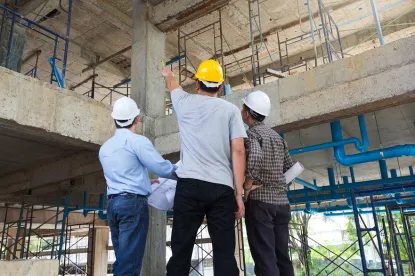As a result, it is no longer law in Illinois that a homeowner who has no recourse against a builder or general contractor (usually as a result of insolvency) can assert a claim for breach of the implied warranty of habitability against a subcontractor that performed defective work during construction of a home.
We last reported on this case when the Illinois First District Appellate Court issued its February 2017 decision. See Sienna Court Condominium Ass’n v. Champion Aluminum Corp., 2017 IL App (1st) 143364. At that time, the Appellate Court held, in part, that the implied warranty of habitability does not extend to design professionals or material suppliers that do not participate in the construction of a home. That part of the Illinois Appellate Court’s decision is not addressed in the new Supreme Court decision, and it remains the law.
However, the 2017 Appellate Court decision also confirmed that Minton was good law, and addressed the scope and reach of Minton. The decision refused to extend Minton to allow the implied warranty of habitability to be asserted against architects or material suppliers where the builder-vendor is insolvent. But the decision confirmed that subcontractors not in privity with the homeowner were potentially liable under the implied warranty, and clarified that “the insolvency of the builder-vendor is the determining factor.”
In its decision, the Supreme Court held that the implied warranty of habitability arises out of and is based on implied terms in the contract between the homeowner and its builder-vendor under Illinois law. The decision therefore concludes that a homeowner who does not have a direct contract with a subcontractor does not have any rights against that subcontractor based on the implied warranty of habitability. The decision further held that this is true even if the homeowner has no recourse against the builder-vendor with whom the homeowner contracted (due to insolvency or otherwise). Finally, the decision confirms that Illinois law allows the implied warranty to be disclaimed and waived in direct contracts between builder-vendors and homeowners.
Based on this recent Supreme Court decision, it is now the law in Illinois that homeowners who are not in privity of contract with a subcontractor can only recover against that subcontractor if they are able to assert a viable negligence claim (or perhaps some other claim that is not based on breach of contract). However, Illinois (like most states) has an “economic loss rule” – the Moorman Doctrine – that does not allow parties to recover pure economic or commercial loss against another through a negligence action. See Moorman Manufacturing Co. v. National Tank Co., 435 N.E.2d 443 (Ill. 1982). While the Moorman Doctrine has certain exceptions, the existence of the economic loss rule may make it difficult, if not impossible, for most homeowners to assert a viable negligence claim against subcontractors. In particular, it likely will be difficult or nearly impossible for homeowners to assert a viable negligence claim for the economic loss that occurs when they have to repair or replace defective construction work at their home.
Under the new Sienna Court decision, Illinois law continues to allow homeowners to bring direct claims against the builder-vendor from whom they purchased their home. Such claims will be governed by the terms of the parties’ contract. Importantly, if the contract includes an express warranty, the homeowner’s rights will include (and may be limited by) the terms and conditions contained in that express warranty in the contract. In addition, the homeowner will have the right to assert a claim for the cost to repair or to replace latent defects under the implied warranty of habitability – but the homeowner will be able to assert this claim if, and only if, the contract does not contain a valid disclaimer that waived the homeowner’s rights under the implied warranty of habitability. If the contract includes a valid disclaimer, the homeowner will not be protected by the implied warranty of habitability – even against the builder-vendor that sold the home.



 />i
/>i

